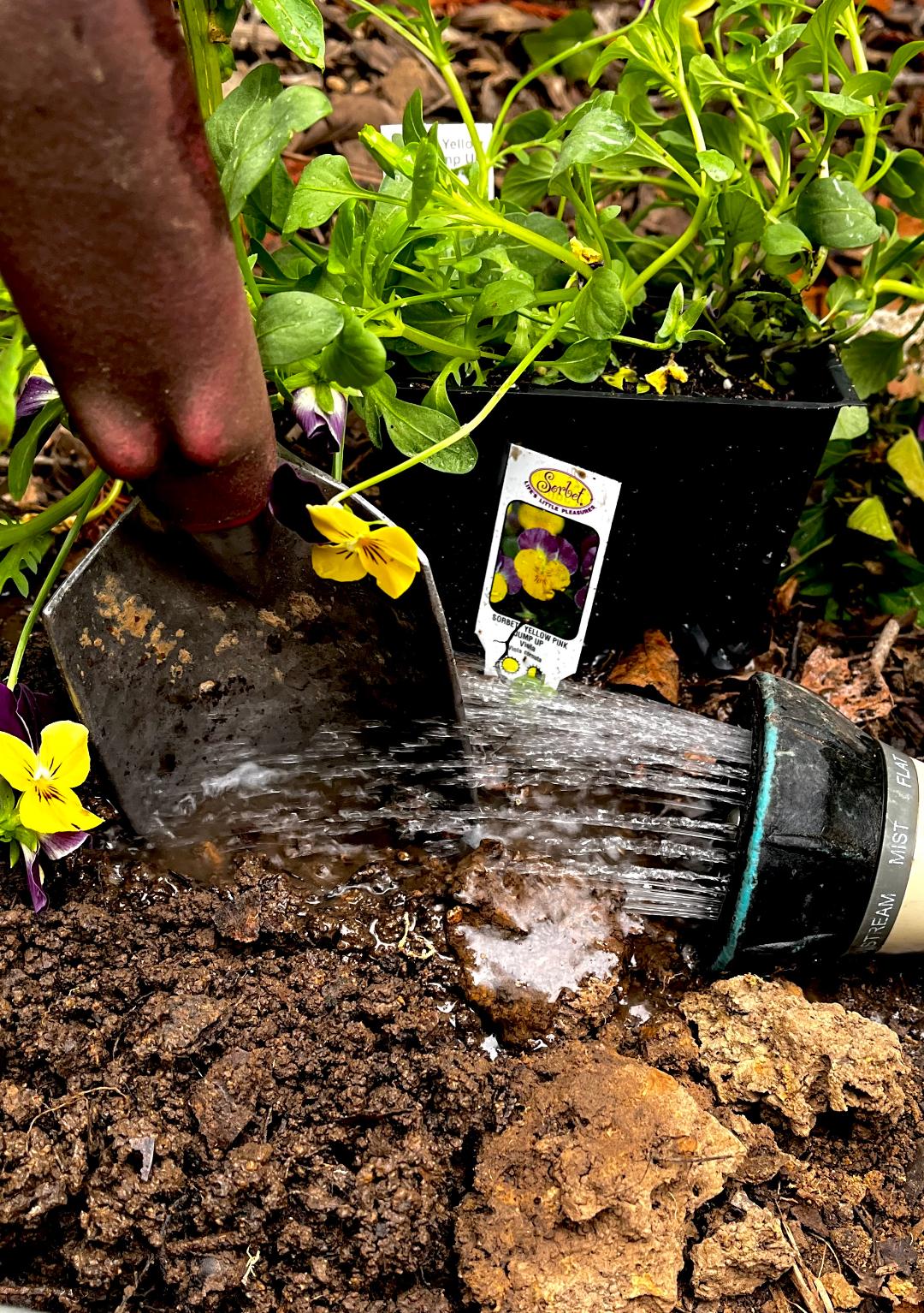Dealing with dirt clods
Published 10:00 am Saturday, October 21, 2023

- Easy clod to cake trick
|
Getting your Trinity Audio player ready...
|
Daunted by rock-hard dirt when trying to plant winter and spring stuff and replace dead shrubs? There is a simple, back-saving garden hack for turning concrete clay into chocolate cake, without breaking the shovel handle: Do it in three easy stages.
Aside, to self- or university-appointed horticultural language police: Dirt is the old English word for soil, which is French for dirt. Just as whether or not you pronounce the “h” in herb, both terms are perfectly acceptable depending on if you prefer English or French. Lighten up.
Before digging, I checked out my leaf-pile compost system, where I dump all my small garden debris and kitchen scraps and from which I harvest organic matter to add to my soil – the crumbled crackers for my chili, so to speak – and found that over the past four hot, dry months it has gotten dry as a bone, all the way to the bottom. The normally fluffy, moist, worm-filled stuff I usually sift into usable soil amendments was crusty and barren of visible life other than a lone roly-poly sowbug.
So, I stirred it a bit and watered twice, a couple of hours apart. The second time I noticed the tell-tale earthy pong of geosmin, that musky fragrance our noses pick up when we dig in good dirt, same as what we smell right before a summer rain. I added some fresh leaves, coffee grounds, banana peels, and pepper cores, and I expect to start seeing worms return pretty soon.
But when I tried to dig my actual dirt, I needed a jackhammer. No way to get a shovel into it even when jumping on the blade guard. So, I turned to an old trick I learned from my grandmother: Either wait till after a slow soaking rain, or water it the night before.
With no rain in sight, I took the latter route, and it was easy-peasy. One evening I watered a few minutes to soften the surface. The next morning, I used my shovel to just make deep cracks in the area, then watered again down deep. That evening I could easily turn the dirt over, a shovel at a time, and break up the biggest clods and pull out any perennial weeds. Watered again and the next morning it was as smooth as cake, easy to turn over again, digging in a little compost. I could have used cheap store-bought compost, manure, or potting soil plus a little bark mulch for bulk, but why spend money when I just grow my own in the leaf pile?
Dug it all together with my garden for, covered with leaf and bark mulch, and I’m ready to plant. With no aches.
I presoaked my English pea seeds, which only took a day to sprout little roots, and laid them in rows and covered with a little dirt and mulch. Used my trowel to set out small broccoli, cabbage, and kale plants, added a few violas for extra color. Raked an area smooth and lightly scattered a seed mix of different colorful lettuces and wet them down to get them started sprouting.
Done. The areas I don’t plant for fall and winter get sown in crimson clover seed, which grow fantastic “green manure” plants while loosening the soil over the winter with roots. It will be cut down and dug in next spring, saving my valuable compost for other areas.
This method of softening with water, then loosening and rewetting, then digging, works just as well for planting shrubs, moving perennials, or any other planting when the dirt is hard and dry.
Felder Rushing is a Mississippi author, columnist, and host of the “Gestalt Gardener” on MPB
Think Radio. Email gardening questions to rushingfelder@yahoo.com.





